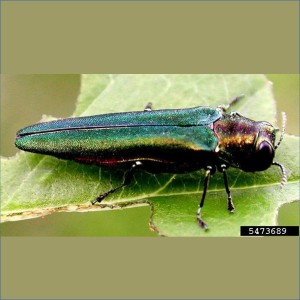
Emerald Ash Borer
The emerald ash borer, a beautiful but extremely destructive, exotic insect pest, has now been detected in North Carolina. …



El inglés es el idioma de control de esta página. En la medida en que haya algún conflicto entre la traducción al inglés y la traducción, el inglés prevalece.
Al hacer clic en el enlace de traducción se activa un servicio de traducción gratuito para convertir la página al español. Al igual que con cualquier traducción por Internet, la conversión no es sensible al contexto y puede que no traduzca el texto en su significado original. NC State Extension no garantiza la exactitud del texto traducido. Por favor, tenga en cuenta que algunas aplicaciones y/o servicios pueden no funcionar como se espera cuando se traducen.
Inglês é o idioma de controle desta página. Na medida que haja algum conflito entre o texto original em Inglês e a tradução, o Inglês prevalece.
Ao clicar no link de tradução, um serviço gratuito de tradução será ativado para converter a página para o Português. Como em qualquer tradução pela internet, a conversão não é sensivel ao contexto e pode não ocorrer a tradução para o significado orginal. O serviço de Extensão da Carolina do Norte (NC State Extension) não garante a exatidão do texto traduzido. Por favor, observe que algumas funções ou serviços podem não funcionar como esperado após a tradução.
English is the controlling language of this page. To the extent there is any conflict between the English text and the translation, English controls.
Clicking on the translation link activates a free translation service to convert the page to Spanish. As with any Internet translation, the conversion is not context-sensitive and may not translate the text to its original meaning. NC State Extension does not guarantee the accuracy of the translated text. Please note that some applications and/or services may not function as expected when translated.
Collapse ▲
The emerald ash borer, a beautiful but extremely destructive, exotic insect pest, has now been detected in North Carolina. …
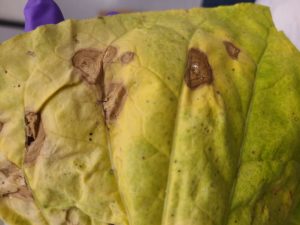
Persistent wet weather conditions continue to cause issues for tobacco diseases across the state. In particular, target spot, caused …

NCSU Vegetable Pathology Lab Disease Fact Sheets Disease management recommendations for organic growers and for home gardeners. They include a description …
Welcome to the 2020 NC State University Virtual Tobacco Field Day! Thank you for viewing our research updates. Below …

It has been a tough year for cotton across the state. As we move toward squaring and bloom stages, …
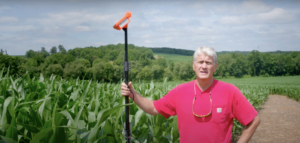
Want to see an AquaSpy in action in a cornfield? Watch our latest video to learn about this new technology …
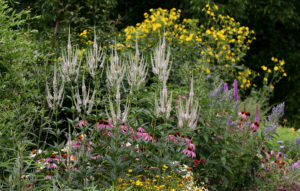
Pollinator Paradise is a Demonstration Garden created by the North Carolina Cooperative Extension, Chatham County Center. Agriculture Agent Debbie Roos …

Many thanks to project coordinator Kira Chaloupka, student photographer Calla Veazie, Extension Specialist Joe Neal, Extension Agents Ashley Troth, …
Recent weather conditions have favored several diseases in tobacco. Most pathogens that we manage in tobacco are most severe …

The 2020 crop is currently variable with some fields still struggling and lagging behind due to early-season stress (4-6 …

By Dominic Reisig and Anders Huseth With cotton moving into squaring it’s a good time to think about a game …

Pollinator Paradise is a Demonstration Garden created by the North Carolina Cooperative Extension, Chatham County Center. Agriculture Agent Debbie …
When soybeans start to flower we need to adjust management practices. Learn how to stage soybeans from R1 to …

June 25, 2020- The 2020 tobacco season continues to be one marked by unique challenges. Though these issues are diverse, …
Prevalent Seedling Diseases Early planting conditions for soybeans were cool, and wet, which has lead to numerous reports of stand …
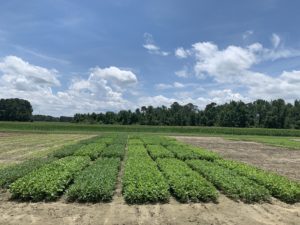
Looking for mid-season management information on the following topics? Insect management, weed management, disease management, foliar fertility use, and …

I recently visited a small Chatham County blueberry farm and found some of the bushes were infected with Exobasidium, …

The Environmental Protection Agency (EPA) recognized the Eastern Band of Cherokee Indians with the regional 2015 EPA Rain Catcher …
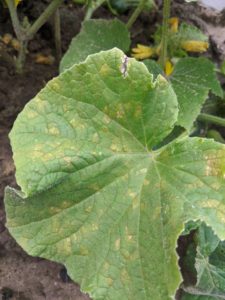
Written by Lina Quesada-Ocampo and Brandon Parker Cucumber downy mildew, caused by the oomycete pathogen Pseudoperonospora cubensis, has been found …